The Porsche 962 and 956 generated an everlasting impression in the world of endurance racing, reigning for over a decade across the globe.
Not that long ago, but in an all-different era, cigarettes and alcohol went hand-in-hand with some of the fastest, greatest racing machinery ever created. For Formula 1, it was Marlboro, rallying was all about Martini, and endurance racing was marked by Rothmans.
Wearing the famous pinstriped blue-on-white livery, the Rothmans-branded Porsche 956 and Porsche 962 left a legendary presence in the World Endurance Championship of the 1980s and having won the 24 Hours of Le Mans three times, it is universally remembered as one of the mightiest Porsche prototypes.
Source: Goodwood Road & Racing
More than in the WEC, this prototype was memorable in North America where it dominated the IMSA GTP Championship for years. That is no coincidence though as the Porsche 962 was primarily built with the United States in mind. Today, we’re exploring the development and the legacy of Porsche’s endurance racer that marked the eighties.
Background
Starting from its very first outing at 24 Hours of the Le Mans in 1953, Porsche created a wave with its first purpose-built race car, the 550 Spyder. Superbly engineered, lightweight and reliable, the 550 Spyder scored in-class victories at the most famous endurance event in the world.

As its successor, the 718 continued the winning streak by triumphing at the Le Mans in its class too. Still, Porsche was not big enough to aim for the overall victory, thus being limited to wins in lower classes. That didn’t stop Porsche from getting more class victories with cars like 904, 906, 907 and 910.
Going up the ranks happened only later, meaning that Porsche missed out on the Ferrari vs Ford rivalry in the 1960s, only to tackle the Le Mans’ top contenders by the end of the decade. The David to the Goliaths of Detroit and Maranello was the 917, a flat-12 powered prototype that came out in 1970, dominating the endurance events in the early 1970s.

The 917 didn’t produce a direct successor, as the Porsche 936 competed in the Group 6 whereas the 917’s native Group 5 went through a series of radical changes. These rulebook alterations changed the mid-1970s prototype racing in the World Endurance Championship.
The rise of the Group C saw Porsche creating the 956, a 935-powered prototype catering to the new regulations. To qualify as a Group C car, the prototype had to be prepared exclusively for competition but also had to have an engine based on a production unit. For Porsche, it was the flat-six from the 911, albeit in its most developed form.

The 956 cemented Porsche’s status of endurance racing royalty, yet the car wasn’t eligible to race on the North American continent. With the USA being a lucrative market for both road cars and racing car endeavours, Porsche had to find a way for the 956 to cross the Atlantic and showcase its dominance on the tracks.
Development of the Porsche 962
The reason the 962 even got to be was that IMSA founder John Bishop objected against the 956, banning it from the championship for being constructed in a way that the driver’s feet were placed ahead of the front axle line, but also having a water-cooled cylinder head which wasn’t allowed as the engines had to come from production vehicles.
So, in order to keep its presence in top tier North American racing, Porsche resorted to developing a new prototype with an air-cooled Type 962/70 engine to adhere to IMSA GTP regulations.
As with the previous racing prototypes, the development of the Porsche 962 was conducted by Norbert Singer and it began in Weissach in late 1983.
Apart from changes making it eligible for the IMSA GTP championship, the 962 had to maintain the mechanics of the 956, as Group C regulations of the era still restricted engine development. The vehicles that raced in the World Sportscar Championship were designated Porsche 962C, delineating them from their IMSA GTP counterparts.
Having a turbocharged flat-six as the only choice, Porsche continued working on aerodynamic efficiency which had to be improved as top speed was still of vital importance in a circuit configuration without the chicanes on the Mulsanne straight.

Providing race cars to privateers was not uncommon for Porsche in the lower classes; such was the case for the 935 and its Kremer-built evolutions. But, being a full-on prototype, the 962 was something else. Numerous private racing teams were offered both the cars and parts support and it was up to them to tweak, modify, and upgrade the prototypes to cater to their own needs in various racing series around the globe.
Mark Raffauf is the Senior Director of Race Operations at IMSA. Source: HRN
The production of the 962 spanned from 1984 to 1991 and over that period, Porsche made 91 examples of the prototype. The factory team used 16 cars for its race outings, selling the other 75 examples to private customers.
Chassis
The issue with the 956 prototypes was the fact that the driver’s feet were positioned in front of the front axle, posing a safety threat. To address this, head of the chassis and suspension development Horst Reitter and his team stretched the wheelbase of the car, enabling it to comply with IMSA GTP safety regulations.

The 956 chassis itself was a new step forward for Porsche, as it was the first monocoque chassis built by the company. The monocoque of the 962 was also constructed in sheet aluminum with an integrated tubular steel roll cage, a balanced mix of lightweight panels and a well-proven safety principle. The monocoque was connected to a triangular tubular spaceframe carrying the longitudinally mounted engine, transmission and rear suspension.

The new chassis construction was extended in the front, positioning the cockpit further behind, thus placing the driver’s feet behind the front axle line. Thus, the major concern from the 956 was mended and the new prototype could enter the North American sportscar championship.
Apart from being built in-house, some chassis were built by Fabcar, an American company specialized in race car construction.
Body
The simple and low slung carbon-reinforced glass fiber shell of the 962 was primarily engineered with downforce in mind. Ground effect was a big deal at the time with Formula One engineers first experimenting with it via massive slide skirts.

At first, Norbert Singer and his team of engineers tried emulating the concept from Formula One by directly applying it to the body of the 962, but that method didn’t work for a prototype car with actual bodywork. Air had to flow differently than it would on an open-wheel racer, so it was back to the drawing board for Porsche. To achieve the desired aerodynamic properties, the 962 needed air coming from the sides.
The underbody of the 962 saw extensive use of aerodynamics with the Venturi tunnels being one of its defining features. This feature trapped the air coming from the sides, sending it to the tunnel which gradually expanded towards the end of the car.
This aerodynamic feature lowered the air pressure, enabling the car to generate more downforce, also gradually generating grip, thus helping the heavier prototype cars feel and act lighter on the tracks.

On top of the rear end, there was a massive Gurney flap wing, adding to the stability of the car and relieving the front axle of excess pressure.
Effective cooling of the turbochargers and the engine was paramount in endurance racing, so the water and oil radiators and the turbo intercooler were nested in the sidepods, with the air coming from two massive forward-facing top mounted ducts.
The prototype was built in two variants, the longtail version with a smaller, lower rear wing and the short tail one, with a larger, higher and more cambered rear aero wing. The first variant was used on longer and faster tracks where top speed was of greater value, whereas the second one prioritized downforce while being raced on shorter circuits.

As the final result, the body of the 962 was able to generate massive amounts of downforce, over two times of the Porsche 917’s most aerodynamically advanced variant, the 917/30 Spyder.
Over the years, the bodies of the 962 were being altered to fit various engine setups, but the basic look of the prototype remained the same.
Engine and Transmission
During its active years, Porsche 962 had several flat-six engine and turbo configurations, all depending on the racing series it entered.
The engine initially used for the Porsche 962 in 1984 IMSA GTP was based on the 934 race car’s unit. The Type 962/70 was a Mezger-designed 4-camshaft, 24-valve aircooled and turbocharged 2.8-liter flat-six. Since twin-turbo setups weren’t allowed in the series, the 962’s 2.8-liter flat-six had a single KKK K36 turbocharger. This setup was good for 680 horsepower at 8,200 RPM and 487 lb-ft of torque.

In 1985, at its first outing in the WEC, the 962 was powered by a Type 935 2.6-liter flat-six, a unit carried over from the 956 prototype. The engine had water-cooled cylinder heads and a KKK K26 twin-turbo induction. The setup resulted in the 962 producing 620 horsepower at 8200 rpm and 464 lb-ft of torque.
Both these units, however, were soon modified to achieve better performance on both sides of the Atlantic.
The nature of the North American races meant that the car needed more displacement, so the first cars to get the new engines were the ones from IMSA GTP Championship. The change had already happened in 1984, where various privateers introduced an improved unit. It was a 962/71 3.2-liter flat-six built by ANDIAL, a specialist company founded by Arnold Wagner, Dieter Inzenhofer, and Alwin Springer. The new engine boasted KKK K36 or Garrett ANDIAL single turbo and twin-plugs, producing 720 horsepower at 7,300 RPM and 531 lb-ft of torque.

For the WEC, the 962 got a 3.0-liter KKK K26 twin-turbo water-cooled 935/82. Thanks to Bosch Motronic 1.7 engine management, this new engine provided better fuel economy, a paramount feature in endurance racing with fuel restrictions. The newly constructed engine got 740 horsepower and 531 lb-ft of torque, a significant bump over the previous unit.
Over the 962’s active years, the engines continued transforming due to changes in various regulations. Some changes included alterations in forced induction as turbo restrictors, electronically controlled wastegate and different engine management units.
The five-speed dogleg synchromesh gearbox in a magnesium case with aluminum bellhousing was sending the power to the rear wheels via a spool differential, the most robust and thus the most reliable solution.
Being suited for endurance races, gear ratios were quite long and the spool differential meant that there was essentially no differential at all, with the rear wheels having a solid connection.

The spool differential made the car prone to understeer and difficult to drive through slow speed corners. Still, this solution provided increased stability on long straights such as the Mulsanne without the chicanes.
Finally, the longitudinally-mounted engines and the gearbox were slightly angled upwards, allowing wider and deeper Venturi tunnels.
Suspension and Steering
A part of the 962’s stellar performance could be linked to its heavy duty and incredibly stiff suspension.
At the front, the 962 featured dual unequal-length wishbones in the front and a lower wishbone with a tubular top rocker arm operating in the rear. The car utilized rising-rate titanium springs and Bilstein gas dampers, interposed in the front and angled at the back.

The angle of the rear suspension unit was adjusted to keep the spring and damper assembly out of the Venturi tunnels, therefore not hampering the 962’s aerodynamic abilities.
Both the front and the rear suspension used stiff anti-roll bar in the rear and soft anti-roll bar in the front to control the car’s tendency to understeer due to its spool differential. On the other hand, the rising-rate springs gave the car softness in low-speed corners, but as the 962 was gaining aerodynamic downforce, the suspension gradually stiffened.
The 962 utilized rack and pinion steering with a rather direct ratio of 11:1.
Brakes, Wheels and Tires
The 962 used magnesium single-bolt Speedline wheels measuring 16×13 inches in the front and 16×14.5 at the back. The beefy racing slicks measured 280/60R16 in the front and 350/65R16 at the rear.

The stopping power was ensured via 325mm steel discs both in the front and the rear with twin single-piston brake calipers on both axles.
The other 962 cars
Be it in its prime or later, the 962 was still seen as a perfect foundation for a privateer team to modify it and up its on-track performance. Kremer Racing created the carbon fiber monocoque 962CK6, GTI Engineering replaced sheet aluminum with aluminum honeycomb for its 962C GTI, and Brun Motorsport had its vision of the 962 too.

Moreover, Holbert Racing had the 962 HR, Dyson racing produced the 962 DR-1 and 962 DR-2, while Schuppan had the TS962s. Many of these cars were built on semi-official Fabcar chassis.
Later on, the 962 lived on as an open-top racer as well in forms of Gunnar 966, Kremer CK7 and K8 and more. The use of these heavily modified 962 cars in the mid-1990s just proved how great the prototype actually was.
Street Cars
Given a relatively large number of private 962 cars sold and the pinnacle of tuner excess, the 962 got several shots of becoming a street legal car too.
The first to convert a 962 for use as a road car was Koenig Specials, a German tuning house that already raced the 962 and had a knack for flamboyant cars. The 962 fit the profile perfectly, so it was converted to Koenig C62.

DP Motorsports followed with the DP62, another conversion done on an existing 962 chassis.
Perhaps the most famous conversion was carried out by Dauer who turned the 962 into a streetcar, only to win the 24 Hours of Le Mans in 1994 with a racing version of the modified 962.

Finally, Schuppan extensively reworked the body of the 962 and constructed an all new chassis for the 962CR. The car had a 962-sourced engine, yet with increased displacement.
Racing
The 962 debuted at the 1984 with Michael and Mario Andretti behind the wheel. Despite leading the race, they were forced to retire when the vehicle experienced engine and gearbox issues during lap 127.
After a slow start in 1984 to sports car racing, the 962 soon got a grip in the IMSA GT championship, where it dominated the IMSA series by winning it each year from 1985 to 1988.

The car’s first outing at the 1985 24 Hours of Le Mans saw the Rothmans Porsche 962 finish the race in third place being beaten by two privately entered 956 cars, the cars it was meant to replace. Regardless, the 962 conquered the World Sportscar Championship in 1985 and 1986, triumphing at the 1986 (pole position) and 1987 24 Hours of Le Mans with Derek Bell, Hans Joachim Stuck, and Al Holbert. After the 1987 victory, Porsche finally lost ground on the Le Mans, giving way to TWR Jaguar in 1989 and Sauber in 1989.
1986 Le Mans Finish. Source: YouTube
Apart from two of the biggest racing series, the car scored considerable success in the Interserie between 1987 and 1992, while also having incredible performance in Japan and Germany’s native DRM series.
Finally, the 962 won one more time at the Le Mans in 1994. Heavily modified and built by Dauer Racing, the Dauer 962 Le Mans cleverly exploited a loophole that made it eligible to run the 24-hour race in the LMGT1 class. In the end, the Dauer 962 scored first and third with Toyota’s prototype taking second place. The Dauer 962 Le Mans was entered by Joest Racing and the winning car was driven by Yannick Dalmas, Hurley Haywood, and Mauro Baldi. The car to take the third was piloted by Danny Sullivan, Thierry Boutsen, and Le Mans veteran Hans-Joachim Stuck.

Legacy of the Porsche 962
Many enthusiasts consider the 956 and the 962 to be the same car and up to a certain degree, it is true. The duo shared a large portion of its mechanics, had the same aerodynamic solutions, and most importantly, it had the same engine as the foundation.
Together, the 956 and 962 made an everlasting impact in the world of endurance racing, reigning for over a decade throughout the globe. The 962 also marked the final years of Porsche’s absolute dominance in top tier racing. But, even beyond its prime, Porsche 962 was a capable track weapon in the hands of private teams, often finding its way onto the podiums.

That being said, the 962 marked and ended one era of Porsche in sublime style and that’s what makes it legendary today.


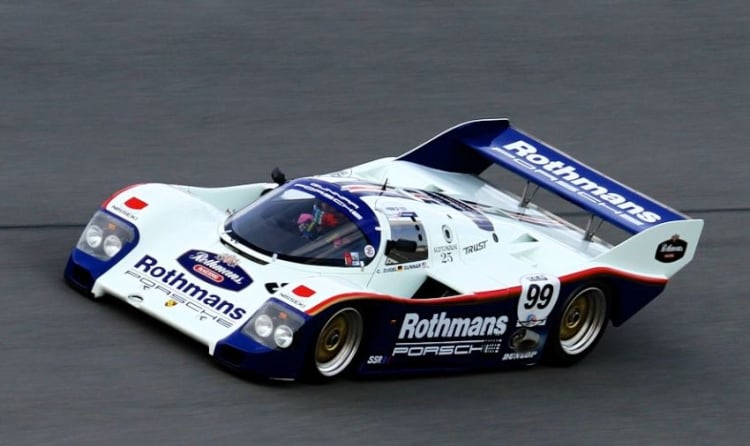

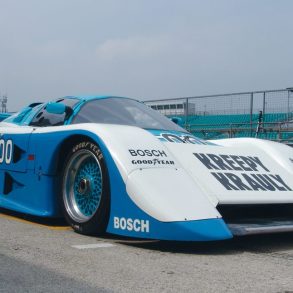
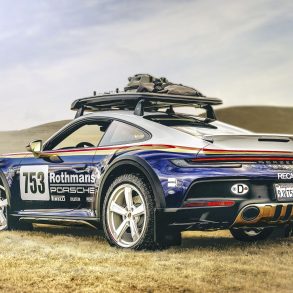
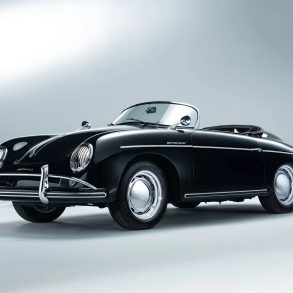
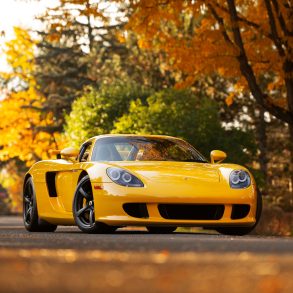

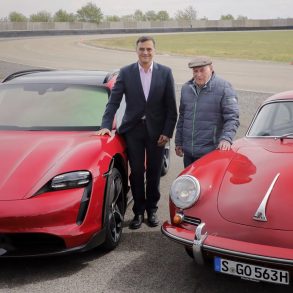

Amazing race cars to drive. Never had a 956 but plenty of group C and IMSA air cars including the 962 Mike Valentine leased to Bob Akin, the 1986 Sebring winning Coca~Cola sponsored 962-113. Really a dominant car with such reliability that, like the 935 before it, was always a contender in any endurance race due to its reliability even when the car was years old.